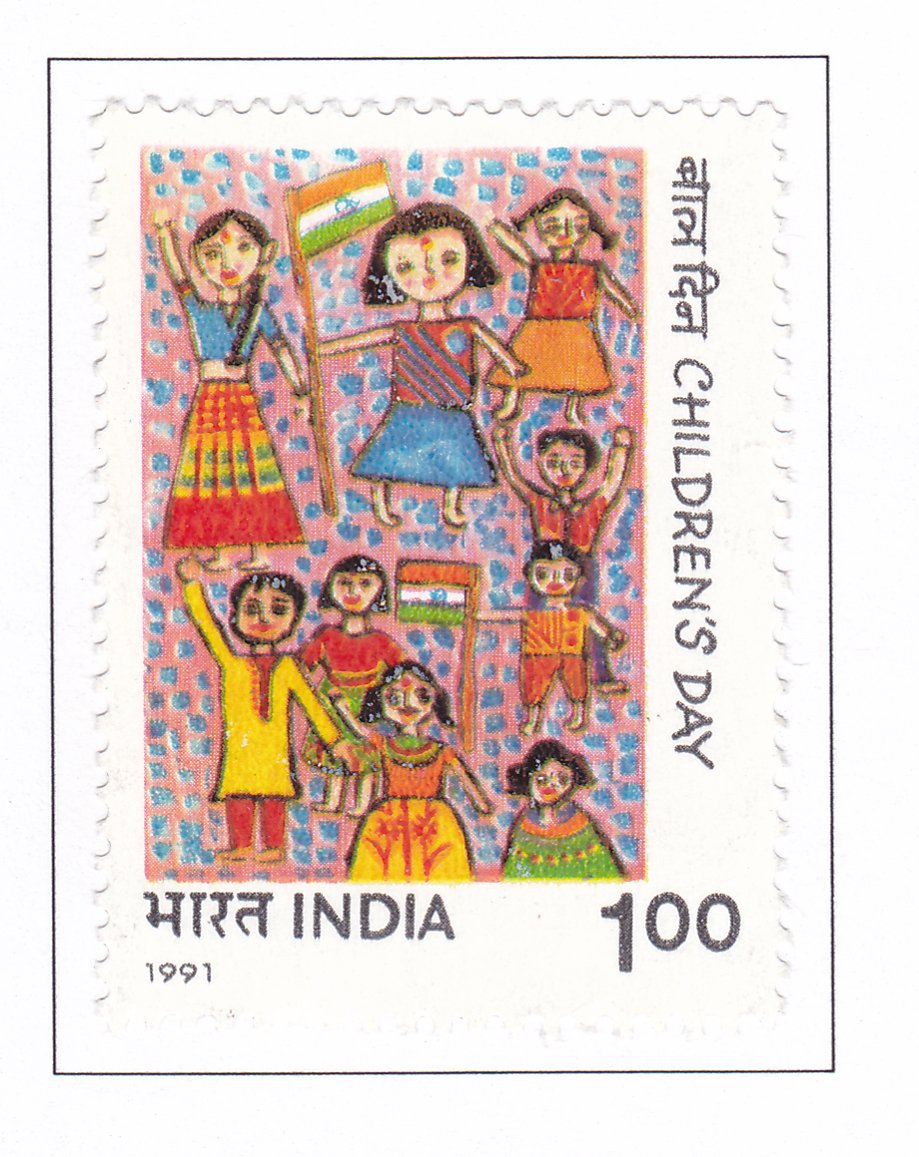Children’s Day

Technical Data
| Date of Issue | November 14, 1991 |
|---|---|
| Denomination | Rs. 1 |
| Perforation | comb 13 x 13½ |
| Printer | Security Printing Press, Nashik |
| Watermark | No Watermark |
| Colors | Multicolor |
| Catalog Codes |
Michel IN 1330 Stamp Number IN 1387 Yvert et Tellier IN 1122 Stanley Gibbons IN 1480 |
| Themes | Children | Drawings | Suits and Costumes |
Commemorative Stamp Set: Universal Children’s Day
Design Elements
- Visual Themes: Celebrates the joy and potential of children, emphasizing their rights to education, care, and protection.
- Color Scheme: Bright and vibrant colors to symbolize the energy and innocence of childhood.
- Typography: Playful and legible fonts that resonate with the theme of children.
- Imagery: Illustrations of happy, diverse children engaging in various educational and playful activities.
Cultural and Historical Significance
- Pandit Jawaharlal Nehru: Commemorates the birth anniversary of India’s first Prime Minister, an ardent advocate for children’s rights and education.
- Universal Children’s Day: Highlights the importance of nurturing and protecting children, aligning with global and national efforts to uphold their rights.
- National Policy and International Commitments: Showcases India’s commitment to global conventions and policies aimed at child welfare and education.
Usage
- Philately: Collectors and enthusiasts use these stamps to honor and promote awareness about children’s rights and welfare.
- Postal Service: Adds a meaningful touch to correspondence, reminding senders and recipients of the importance of child care and education.
- Commemorative Events: Released during significant anniversaries, educational campaigns, and awareness events to emphasize the focus on child welfare.
Importance of the Commemorative Stamp Set
- Educational Value: Enhances public knowledge and appreciation of children’s rights and the importance of their well-being.
- Cultural Preservation: Reinforces the legacy of Jawaharlal Nehru and the ongoing efforts to improve children’s lives.
- National Pride: Reflects India’s commitment to ensuring a better future for its children through education and care.
- Aesthetic Appeal: Combines historical significance with artistic representation, appealing to both history buffs and the general public.
Example of the Stamp Design
- Stamp Image: Illustrations of children studying, playing, and engaging in healthy activities.
- Background: Elements representing education, health, and care, such as books, playgrounds, and healthcare symbols.
- Text: “Universal Children’s Day – 14th November” along with the date of issuance.
- Colors: Bright and vibrant hues to reflect the theme of childhood and joy.
The Commemorative Stamp Set Might Include:
- Educational Initiatives
- Image: Children in a classroom setting.
- Text: “Universal Enrollment – Free and compulsory education up to 14 years of age.”
- Health and Nutrition
- Image: Children receiving healthcare and nutrition.
- Text: “Integrated Child Development Services – Ensuring health and nutrition for every child.”
- Protection and Care
- Image: Children being cared for in a safe environment.
- Text: “Scheme for Children in Need of Care and Protection – A safe haven for every child.”
- Global Commitments
- Image: Symbols of international conferences and summits.
- Text: “World Summit for Children – Global action for child survival, protection, and development.”
Significance
- National Pride: Reinforces national pride by celebrating the commitment to child welfare and development.
- Public Awareness: Raises awareness about the critical importance of child care, health, and education.
- Legacy: Ensures the legacy of Pandit Jawaharlal Nehru and the values he championed are remembered and honored.
- Future Hope: Inspires future generations to prioritize and invest in the well-being and development of children.
